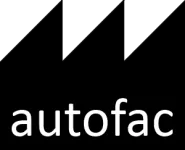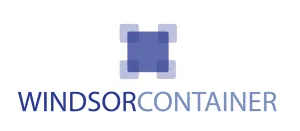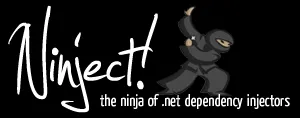
The Ultimate List of .NET Dependency Injection Frameworks
Dependency Injection. Some love it, some hate it. For some developers it might be an anti-pattern, unnecessary, other developers cannot think about building applications without it.
I believe that there are use cases where Dependency Injection frameworks are a good choice. Therefore, I created a few videos about Dependency Injection on my YouTube channel. Anyway, Dependency Injection frameworks are still around in 2019.
There is no overview about the current state of Dependency Injection frameworks available on the internet. Therefore, I decided to create a list as a reference.
The goal of this overview is to provide facts and help you narrow down on the options for your project. It’s not meant to be a guide on which framework to choose or to give opinionated recommendations.
The following list contains all available Dependency Injection frameworks for the .NET platform in alphabetical order beginning with the actively maintained and developed frameworks ending with the inactive and deprecated frameworks.
Diagram: Comparison of avg. daily downloads per framework
Table of contents
- Autofac
- Castle Windsor
- Lamar
- LightInject
- Ninject
- SimpleInjector
- Spring.NET
- Unity
- LinFu (inactive)
- Managed Extensibility Framework (MEF) (abandoned / deprecated)
- PicoContainer.NET (abandoned / deprecated)
- S2Container.NET (abandoned / deprecated)
- StructureMap (abandoned / deprecated)
Autofac

Autofac is an addictive Inversion of Control container for .NET Core, ASP.NET Core, .NET 4.5.1+, Universal Windows apps, and more. Its core features are the modularity system and the fluent API for dependency registrations.
As it was written when the .NET Framework 3.5 was released, it was the first Dependency Injection framework to support lamda registrations. According to the original creator Nicholas Blumhardt the inspiration for this feature came from Needle which is a IoC container for Ruby.
| Website | https://www.autofac.org/ |
| Platforms | .NET Framework 4.5, .NET Core, Silverlight 5, Universal Windows Platform Apps (UWP), Windows Phone 8 |
| GitHub | 2300+ Stars, 550+ Forks |
| First released | 2007 |
| NuGet | 19M+ total downloads, 6.5K+ downloads per day (avg) |
| Additional Features | Interceptors, Concurrency Handling, Multitenant support, various (test) framework integrations |
| Documentation | Documentation |
| Development | active |
Hint: If you want to get into Dependency Injection using Autofac, check out my YouTube channel where I show the basics of Dependency Injection using Autofac.
Castle Windsor

According to their project website, “Castle Windsor is a best of breed, mature Inversion of Control container available for .NET.”
| Website | http://www.castleproject.org/projects/windsor/ |
| Platforms | .NET Framework 4.5, .NET Standard 1.6 (with a bunch of missing features, see project page for more details) |
| GitHub | 900+ Stars, 350+ Forks |
| First released | 2004 |
| NuGet | 4.4M+ total downloads, 1.5K downloads per day (avg) |
| Additional Features | Aspect-oriented programming (AOP), Proxies, and Interceptors (using Castle.DynamicProxy) |
| Documentation | Documentation |
| Development | active |
According to Jonathon Rossi, one of the active maintainers, they plan to add .NET Standard 2.1 support soon since Reflection.Emit has been restored to .NET Standard which is needed for DynamicProxy related features. Some of the unnecessary legacy features will not be supported.
Lamar
Lamar is the new kid on the block. Its initial commit date is March 2018 according to the GitHub repository. The idea behind Lamar is to create a successor to StructureMap. According to the project website, its focus is the performance.
Because Lamar supports most of StructureMap’s IContainer syntax, Lamar is an interesting opportunity if a project is currently using StructureMap and should be moved to a more modern, faster framework. As it’s one of the newest frameworks it’s also worth considering to be used in new projects.
Lamar provides integration to the ASP.NET core Dependency Injection mechanism.
| Website | https://jasperfx.github.io/lamar/ |
| Platforms | .NET Framework 4.6+, .NET Standard 2.0 |
| GitHub | 140+ Stars, 20+ Forks |
| First released | 2018 |
| NuGet | 25K+ total downloads, 75+ downloads per day (avg) |
| Additional Features | Interceptors using Decorators, Diagnostics |
| Documentation | Documentation |
| Development | active |
LightInject

LightInject proclaims to be an ultra-lightweight IoC container for the .NET platform. This does not mean that the feature set is limited. LightInject provides different lifetime scopes, explicit and implicit service registration, as well as lazy dependency resolution.
It comes with many framework integrations and makes use of modern .NET platform features to provide a good developer experience. LightInject also provides clean and understandable documentation featuring code examples and therefore makes it easy to get started.
| Website | https://www.lightinject.net/ |
| Platforms | .NET Framework 4.5.2+, .NET Standard 1.1 |
| GitHub | 340+ Stars, 100+ Forks |
| First released | 2011 |
| NuGet | 650K+ total downloads, 240+ downloads per day (avg) |
| Additional Features | Integrations with SignalR, Nancy, ASP.NET core, xUnit |
| Documentation | Documentation |
| Development | active |
Ninject

Ninject is one of the well-known .NET Dependency Injection frameworks. Ninject claims to make your software much easier to change after its initial release because Ninject is focused on simplicity and ease of use.
Ninject has a big community which developed many extensions to the core Ninject project including MVC support, WCF support and many more.
| Website | http://www.ninject.org |
| Platforms | .NET Framework 3.0+, Silverlight, Windows Phone 7, Mono, .NET Standard 2.0 |
| GitHub | 2100+ Stars, 500+ Forks |
| First released | 2008 |
| NuGet | 8.4M+ total downloads, 2.8K+ downloads per day (avg) |
| Additional Features | MVC support, WCF support, interceptors, conventions, named scopes, Logging, message brokers, Quarz, and many more. |
| Documentation | Documentation |
| Development | active |
SimpleInjector

Simple Injector is an easy-to-use Dependency Injection (DI) library. Simple Injector not only wants to be simple to use but is also optimized for performance and concurrent use. Its the goal of the project to be an alternative for developers who want to focus on the important stuff while SimpleInjector is doing its job.
| Website | https://simpleinjector.org |
| Platforms | .NET Framework 4.0+, .NET Standard Mono, Silverlight, Windows Phone, UWP |
| GitHub | 700+ Stars, 100+ Forks |
| First released | 2010 |
| NuGet | 4.3M+ total downloads, 1.6K+ downloads per day (avg) |
| Additional Features | (web) framework integrations, Wcf integration |
| Documentation | Documentation |
| Development | active |
Spring.NET

According to their project website, “Spring.NET provides comprehensive infrastructural support for developing enterprise .NET applications. (…) The design of Spring.NET is based on the Java version of the Spring Framework.”
Sprint.NET contains various NuGet packages with additional features beyond dependency injection such as aspect-oriented programming, ADO.NET and NHibernate adapters, test integrations and much more.
| Website | http://springframework.net/ |
| Platforms | .NET Framework 4.5.2, .NET Standard 2.0 |
| GitHub | 500+ Stars, 250+ Forks |
| First released | 2005 |
| NuGet | 310K+ total downloads, 110+ downloads per day (avg) |
| Additional Features | aspect-oriented programming AOP, data adapters (ADO.Net, NHibernate), Web extensions, NUnit, MsTest, Messaging, Quartz, Velocity. |
| Documentation | Documentation |
| Development | active |
Unity

The Unity Container (Unity) is a lightweight, extensible dependency injection container. It facilitates building loosely coupled applications and provides various advantages for developers. It supports registration by convention and type interception.
Unity was created and developed by Microsoft and handed off to the community in 2015.
| Website | https://unitycontainer.github.io/ |
| Platforms | .NET Framework 4.0+, .NET Core, .NET Standard 1.0 and 2.0 |
| GitHub | 1000+ Stars, 250+ Forks |
| First released | 2008 |
| NuGet | 14.9M+ total downloads, 5.1K+ downloads per day (avg) |
| Additional Features | type interception, framework integrations |
| Documentation | Documentation |
| Development | active |
LinFu
LinFu (“Language INdependent Features Underneath [.NET].”) is a small project founded by Philip Laureano in 2007. It is a framework that adds mixins, inversion of control and other language features to the Common Language Runtime (CLR).
| Website | https://github.com/philiplaureano/LinFu |
| Platforms | .NET Framework 2.0+ |
| GitHub | 180+ Stars, 30+ Forks |
| First released | 2007 |
| NuGet | 310K+ total downloads, 110+ downloads per day (avg) |
| Additional Features | Mixins |
| Documentation | Documentation |
| Development | inactive |
Managed Extensibility Framework (MEF)
The following description is taken from the official .NET framework documentation article about MEF provided by Microsoft:
“The Managed Extensibility Framework or MEF is a library for creating lightweight, extensible applications. It allows application developers to discover and use extensions with no configuration required. It also lets extension developers easily encapsulate code and avoid fragile hard dependencies. MEF not only allows extensions to be reused within applications but across applications as well.”
| Website | https://github.com/MicrosoftArchive/mef |
| Platforms | .NET Framework 4.0+ |
| GitHub | 60+ Stars, 20+ Forks |
| First released | 2010 |
| NuGet | not available |
| Documentation | Documentation |
| Development | deprecated |
PicoContainer.NET
Pico Container.NET is a lightweight dependency injection framework providing only the necessary features, no overhead. The project is no longer continued.
| Website | http://picocontainer.com/ |
| Platforms | .NET Framework |
| GitHub | 90+ Stars, 20+ Forks |
| First released | 2004 |
| NuGet | not available |
| Documentation | Documentation |
| Development | abandoned, last release on October, 8th 2014. |
S2Container.NET
S2Container.NET is another Dependency Injection framework that was ported from a Java library back in 2005. It is not widely-known and development was stopped in 2015.
| Website | https://github.com/MicrosoftArchive/mef |
| Platforms | .NET Framework 2.0 |
| GitHub | not available |
| First released | 2005 |
| NuGet | not available |
| Documentation | Documentation |
| Development | abandoned, last release 1.4.1 in 2015. |
StructureMap

From the project website: “StructureMap is the oldest, continuously used IoC/DI container for .NET dating back to its first public release in June 2004 on .NET 1.1.”
As the grand-father of dependency injection frameworks, StructureMap offers feature-wise everything developers expect from a DI container: A modular configuration, lazy dependency resolution, resolution of IEnumerable types, diagnostics, and child container support. These features listed here are only a few selected features.
Meanwhile, StructureMap has been sunsetted as announced by Jeremy Miller on January 29th, 2018 and the maintainers recommend using Lamar as a possible replacement.
| Website | http://structuremap.github.io/ |
| Platforms | .NET Framework 4.5, .NET Standard 1.6, Windows Phone (up to 8.1) |
| GitHub | 800+ Stars, 250+ Forks |
| First released | 2004 |
| NuGet | 5.3M+ total downloads, 1.8K downloads per day (avg) |
| Documentation | Documentation |
| Development | deprecated |
Framework comparison
The following diagram shows the number of daily downloads the frameworks listed on NuGet.com get on average.
Remember, this is just a metric to show the current state, and it does not mean that the most popular framework is always the best choice for your project. Also, new projects that have not been there for a long time (e.g., Lamar) do not have that many downloads yet.
The numbers were taken from Nuget.com on January 24th, 2019.

If there is a framework missing on this list or do you believe that some information is wrong? DM me on Twitter so that this list always stays current and complete.
Other Resources
PREMIUM CONTENT
